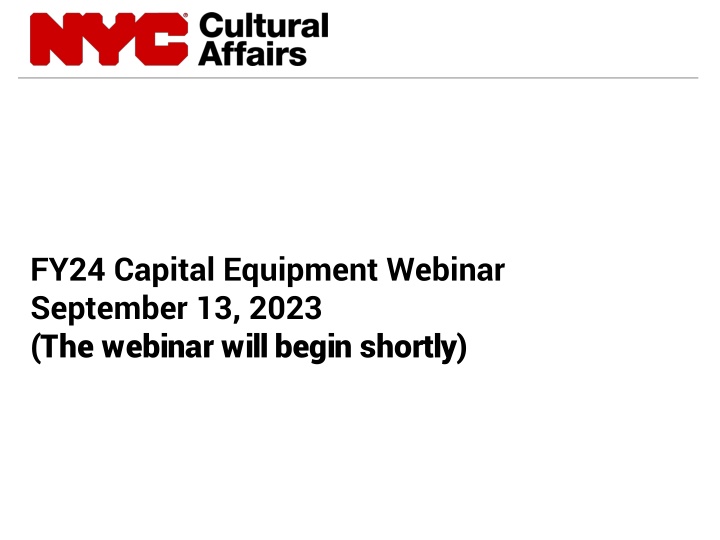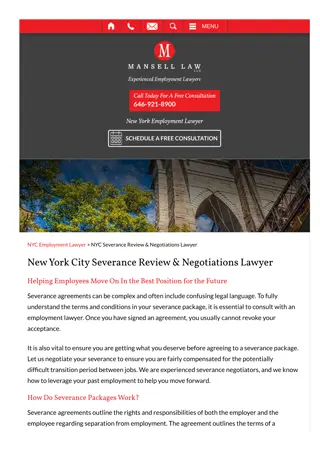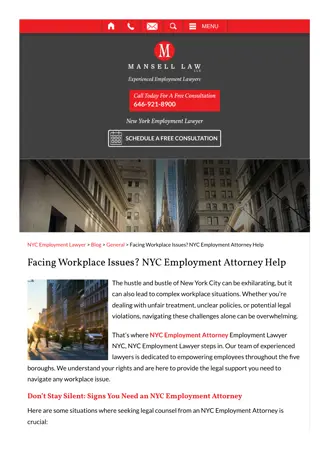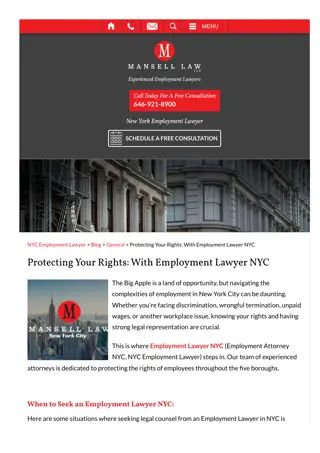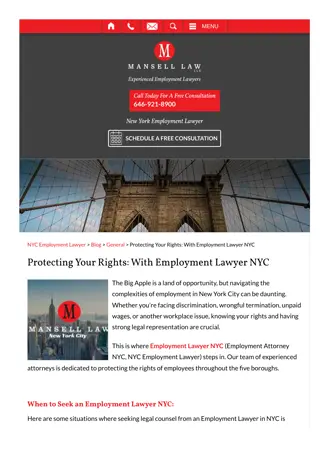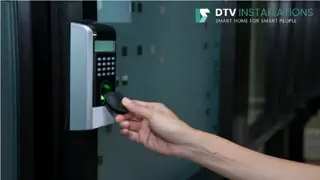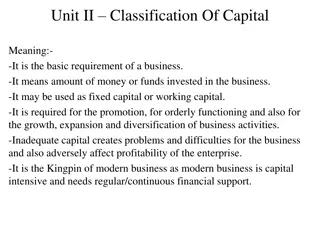Capital Funding Governance and Funding Conditions in NYC
Discussing capital funding governance in NYC for city-funded equipment projects, governed by specific laws and policies to ensure fair use and eligibility. Funding allocation doesn't guarantee all requested equipment will be eligible, government approvals, or adherence to timelines, emphasizing the vulnerability of funds to budget cuts.
Download Presentation

Please find below an Image/Link to download the presentation.
The content on the website is provided AS IS for your information and personal use only. It may not be sold, licensed, or shared on other websites without obtaining consent from the author.If you encounter any issues during the download, it is possible that the publisher has removed the file from their server.
You are allowed to download the files provided on this website for personal or commercial use, subject to the condition that they are used lawfully. All files are the property of their respective owners.
The content on the website is provided AS IS for your information and personal use only. It may not be sold, licensed, or shared on other websites without obtaining consent from the author.
E N D
Presentation Transcript
FY24 Capital Equipment Webinar September 13, 2023 (The webinar will begin shortly)
Welcome! We will address questions at the end of the presentation. You can submit questions in the following ways: Q + A feature on Zoom Through email or text to: capitalrequest@culture.nyc.gov When you submit a question through any of the above options, include your name, your organization and the system type. Participant mics will remain muted throughout the presentation and Q + A.
Why We Are Here Discuss capital funding Define capital eligibility Obtain the Certificate to Proceed (CP) Register the contract Organization responsibilities post- delivery
Capital Projects Fund The funding you received was allocated as part of NYC s Capital Budget. The Capital Budget is funded through the sale of municipal bonds. The NYC Comptroller, through the Bureau of Public Finance, and the Mayor, through the Office of Management and Budget (OMB), share the responsibility for issuing bonds and notes backed by the City s General Obligation Fund. OMB helps implement the City's borrowing and bond programs and conducts legal and eligibility reviews of capital projects for financing with bond proceeds. The Comptroller s Office, working with OMB, determines and approves structures, terms, and conditions for all City debt. As well as actively monitoring the City s outstanding bonds and handling debt policy and administrative matters.
Capital Funding Governance City-Funded Equipment Projects are Primarily Governed by: NYS Local Finance Law Sections 10 and 11 Chapters 9 and 13 of the City Charter NYC Comptroller's Accounting Directive 10 NYC Procurement Policy Board Rules As such: Must be used for an organization s public purpose and must be used continuously for at least its estimated useful life as determined by OMB Must be capitally eligible Cost should be fair and reasonable Equipment will either be the property of NYC (most cases), or NYC will retain an interest in the equipment (typically a UCC lien)
Funding Conditions Funding allocation does not guarantee: All equipment requested will be deemed capitally eligible Required approvals by government entities will be granted Project will occur according to your anticipated timeline The rules won t change FUNDS ARE NOT SAFE FROM BUDGET CUTS
Organization Responsibilities Organization must: Comply with NYC requirements Respond to requests for information in a timely manner Use the equipment towards its public purpose Assume responsibility of insurance, maintenance, training, security, and operation of equipment Report annually to DCLA on condition of equipment in compliance with NYC requirements Notify DCLA in advance and receive prior approval when replacing, disposing, relocating, or removing equipment Relinquish equipment back to NYC if it is no longer in use
Capital Equipment Process 7 Second Milestone Register the Contract First Milestone Certificate to Proceed Solicit Bids and Award Contract Scope Development Contract Registration Delivery and Payment OMB Review
Baseline Capital Eligibility Equipment Systems (as per Directive 10) To be capitally eligible, equipment systems must be composed of a group of related elements. The elements are considered related if they are mutually dependent upon each other, and physically connected or connected through a wireless network. Each system must be at least $50,000 ($250,000 if minimally attached to property). Each system must have a minimum useful life of 3 to 15 years, dependent on the type of system. https://comptroller.nyc.gov/services/for-city-agencies/comptrollers- directives-and-memoranda/directives-and-memoranda/
Capital Eligibility Types of systems: Information Technology (IT) Sound Projection Audio Visual (AV) Lighting Seating Vehicles and Heavy Equipment Standalone systems e.g., Piano
Ineligible Items Some examples include: Maintenance, service, extended warranty fees Training Laptops, tablets, smartphones, and handheld devices Spare or consumable items (e.g., batteries, lamps, gels) System components not integral to the operation of the equipment, such as stands, carrying cases, or projection screens Application software (i.e., database programs, productivity software) Stand-alone air conditioners Items that qualify as construction: HVAC or Chiller Equipment, Elevators and chair lifts, room lighting fixtures (strip lights), grids
Scope Development The process begins with defining the project scope and compiling project deliverables: DCLA Questionnaire Equipment List / Exhibit A Quotes or Cut Sheets to support Equipment List Useful Life Statement Operating Contract Statement Proof of site control for the duration of the useful life (e.g. lease, deed) Software attestation letter for any software that is not transferable If any equipment is minimally attached to the structure, all landlords and lien holders must agree to DCLA s personalty agreement, confirming they have no claim to the equipment
DCLA Questionnaire To help understand the project, the questionnaire provides OMB with detail on the system and how it will be used by the organization. How does each part or group of parts relate to the system? Why are these parts necessary for the system to function? Is the system, as a whole or in part, attached to real property? Will this equipment reside on City property? Do you own your property? If you lease, when does the lease expire? Do you have any current operating contracts with the City in which the requested equipment system will be used or available for use? Whether positively or negatively, how will this new equipment impact your organization s budget and programming? Do any of the components require or contain software? If so, provide the end user license agreement.
Software Software we can fund generally falls into one of two categories: Operating Systems system software that manages computer hardware and software resources, providing common services for computer programs Imbedded Software software to control machines or devices that are not typically thought of as computers, i.e. drivers or firmware Obtain a copy of the End User License Agreement ("EULA") from the manufacturer. We will review the EULA to ensure the software is transferrable and will not be terminated prior to the end of the useful life. When components of your system contain software, ask these two questions: 1. Is the software eligible? 2. If eligible, is the software transferable?
Ineligible Software Software we cannot fund: - Application software such as productivity software, design software, box office software, sound and media playback software, etc. - Added functionality software that adds features beyond the base functionality and does not impact the base functionality of the equipment - Subscription based IT application software (SBITA) and components that require SBITA Defined as a contract that conveys the right to use another party s hardware, software, or both, including information technology infrastructure, to an end user, as specified in the contract for a period of time in an exchange or exchange-like transaction. o
Software: Transferable Example Transferable such as an OEM operating system 3. Transfer. A. If you obtained the Apple Software preinstalled on Apple- branded hardware, you may make a onetime permanent transfer of all of your license rightsto the Apple Software (in its original form as provided by Apple) to another party, provided that: (i) the Apple Software is transferred together with your Apple branded hardware; (ii) the transfer must include all of the Apple Software, including all its component parts and this License; (iii) you do not retain any copies of the Apple Software, full or partial, including copies stored on a computer or other storage device; and (iv) the party receiving the Apple Software accepts the terms and conditions of this License.
Software:Non-Transferable Example Software License. (a) General. Subject to the terms of this Agreement, Provider grants to Customer, and Customer accepts from Provider, a non-exclusive, non-transferable (except as otherwise set forth herein) and non-sublicensable license to access and use the quantities of each item of Software purchased from Provider or a Partner within the parameters of the license type ( License Type(s) ) described below in the quantities purchased ( License ). Except for MSP Licenses (as defined below), Customer shall only use the Software to support the internal business operations of itself and its worldwide Affiliates. 2.
Equipment List Organization creates a detailed list of all equipment in the system: Item # Item Type Qty Brand Specific or Equal Make Model MFR # Color Salient Characteristics/ Technical Specs Unit Cost Total Cost Software Y/N 1 1 Brand Specific or Equal Yamaha QL1 QL1- FV1 Black 18.4 x10.7 x22.1 135w power 10" touch panel 32 mono/8 stereo inputs 16 faders/ mix buses 1 stereo bus 16 analog inputs 8 analog outputs $6,000 $6,000 Y Audio Console 2 4 Brand Specific or Equal Meyer UPJ- 1P UPJ- 1P- 3P Black 11.15 x22.43 x12.25 100-240VAC Female XLR input with male XLR loop output 3pin connector $5,120 N Speaker $20,480 List quantifiable characteristics that detail the specifications that are required in the brand and model you prefer IT systems can include installation For FY24 projects, 10% of your allocation will be held for contingency
Brand Specific or Equal Equipment list should indicate whether an item is Brand Specific or Equal Brand Specific or Equal allows vendors to substitute equivalent items by other manufacturers Majority of City purchased items are made as Brand Specific or Equal BRAND SPECIFIC ITEMS REQUIRE A LENGTHY DETERMINATION PROCESS AND MAY NOT BE APPROVED
Legal Agreements Every City-funded equipment purchase is subject to a legal agreement which sets forth the terms and conditions of an organization s acquisition and use of the equipment The type of agreement necessary is determined by the procurement method - A Capital Equipment Letter Agreement (CELA) is most common and is used for equipment procured by the City for use by the organization - A Funding Agreement (FA) is only used for certain projects funded by the Borough President and/or City Council, where the organization is responsible for bidding and procurement of the equipment DCLA will determine the appropriate procurement method
Capital Equipment Process 7 First Milestone Certificate to Proceed Scope Development OMB Review
OMB Review The Office of Management and Budget (OMB) reviews the request and, if approved, issues the Certificate to Proceed (CP) giving the managing agency spending authority OMB will review the CP request for: Capital eligibility System justification and cost estimate Appropriate legal agreements OMB gives themselves 30 days to approve a CP Questions from OMB must be answered in a timely fashion
Capital Equipment Process 7 Second Milestone Register the Contract First Milestone Certificate to Proceed Scope Development OMB Review
Procurement Laws and Regulations All DCLA procurements must use one of the methods authorized by the City s Procurement Policy Board (PPB) and comply with the PPB Rules Local Laws that may apply to the procurement: Minority and Women-owned Business Enterprise (Local Law 1 of 2013) Environmentally Preferable Purchasing (Local Laws 119 and 120 of 2005) Equal Employment Opportunity (Executive Order 50)
Procurement Preparation Final review of equipment list includes: Updating model numbers on any discontinued items Adding detail to model numbers and specifications Noting any required compatibility (connector types, OS) No changes are permitted to the scope approved by OMB The City procures items as brand specific or equal to maximize competition Vendors may propose substitutions that meet or exceed your specifications
Determination of Procurement Method DCLA determines the procurement method based on several factors, including but not limited to: Type of equipment Cost of system Source of funding Organizational capacity
Capital Equipment Process 7 Second Milestone Register the Contract First Milestone Certificate to Proceed Solicit Quotes and Award Contract Scope Development OMB Review
DCLA Purchase Standard Purchase Process: DCLA procures the equipment for organization s use. Each equipment system is solicited and purchased separately. Procurement may be either: - Competitive solicitation. - Purchase from a City requirements contract or NY State centralized contract. Bidder and vendor selection processes are highly regulated. If no bids are received, the project may be re-solicited or a CP amendment may be needed. Equipment will be City-owned.
DCLA Purchase < $1M M/WBE Purchase: Purchases up to $1,000,000 are awarded to NYC-certified Minority- and Women-Owned Business Enterprises (M/WBEs) Requires three bids from certified M/WBE firms Award to responsible vendor that provides fair and reasonable price Public hearing for awards >$100K Public notice of award Online directory of NYC certified M/WBE firms: http://www.nyc.gov/buycertified
DCLA Discretionary Purchase DCLA Discretionary Purchase through a Funding Agreement and Security Agreement: Procurement method for certain projects using Borough President and/or City Council discretionary funding. DCLA will determine whether this method will be used All vehicles are purchased through a discretionary purchase Organization is responsible for bidding and procurement of the equipment (including vendor payment) per the terms of the Funding Agreement Extensive legal documentation is required (Funding Agreement, Security Agreement, lien search and UCC financing statement, legal opinion, etc.) Organization receives City funding on a reimbursement basis after vendors are paid and requisitions submitted to DCLA
DCLA Discretionary Purchase >$100K Procurements >$100K also require: Contract Public Hearing PASSPort Enrollment and Disclosure filing Compliance with Executive Order No. 50 (EEO) Requires City contractors to comply with federal, state, and local equal employment opportunity (EEO) laws and regulations -
Other Procurement Methods Department of Citywide Administrative Services (DCAS) Competitive Sealed Bid Process (contracts over $1M) Negotiated Acquisition Sole Source
Capital Equipment Process 7 Second Milestone Register the Contract First Milestone Certificate to Proceed Solicit Bids and Award Contract Scope Development Contract Registration Delivery and Payment OMB Review
Delivery and Verification Upon delivery, open and check all equipment ASAP Report any damaged or faulty equipment to the vendor and your DCLA project manager For City procurements, return the Equipment Receipt & Notification Form to DCLA as soon as possible For Funding Agreements, submit payment requisitions to DCLA along with proof of applicable lien filing, updated lien search, packing slips, invoices, and proof of payment
Annual Use Certification As required by the CELA or Funding Agreement, each year, your organization must provide proof of insurance coverage and state: Equipment has been used in accordance with the terms and conditions of the applicable use agreement Equipment has not been destroyed, replaced, disposed of, or removed to another location without the City s consent, except temporary removal as necessary for maintenance or repair Equipment has been used and maintained in a responsible and lawful manner by the Organization for its City Purpose and not for religious purposes, personal, family or household use Equipment has not been damaged or destroyed, lost or stolen, in whole or in part, without immediate notification to the City Equipment has not become subject to any non-City lien, lease, mortgage, assignment, interest, or other encumbrance
Relinquishment and Disposal Contact DCLA for information on the proper disposal of equipment. Equipment may not be disposed before the useful life has ended Request DCLA consent to destroy, replace, dispose of, relocate, or remove equipment For any eligible electronic equipment: DCLA will coordinate disposal using the City s Safe Handling of Waste vendor For all other equipment, the Office of Surplus Activities must approve of the relinquishment method; this process can take up to two months - -
Next Steps DCLA schedules a kick-off meeting DCLA provides CP document templates Organization submits initial CP document drafts Organization responds promptly and completely to all questions and requests
List of Acronyms ACCO CP DCAS DCLA DLS EEO EPP MOCS M/WBE OMB PASSPort Database of vendor/contract management info PPB NYC Procurement Policy Board SBS Department of Small Business Services Agency Chief Contracting Officer Certificate to Proceed Department of Citywide Administrative Services Department of Cultural Affairs Division of Labor Services (unit of SBS) Equal Employment Opportunity Environmentally Preferable Purchasing Mayor s Office of Contract Services Minority and Women-owned Business Enterprise Office of Management and Budget
Contact Us Darren Brannon Capital Equipment Manager dbrannon@culture.nyc.gov Livia Bloom Ingram Capital Equipment Manager lingram@culture.nyc.gov Eric Cecil Capital Equipment Manager ececil@culture.nyc.gov Joshua Downes Capital Equipment Manager jdownes@culture.nyc.gov Sei Young Kim Agency Chief Contracting Officer skim@culture.nyc.gov Ingrid Salzman-Huie Deputy Agency Chief Contracting Officer Isalzman-huie@culture.nyc.gov
NYC Cultural Affairs Q & A You can submit questions in the following ways: Via Zoom: Q + A feature Via email or text: capitalrequest@culture.nyc.gov When submitting questions, include your name, organization, and system type.
